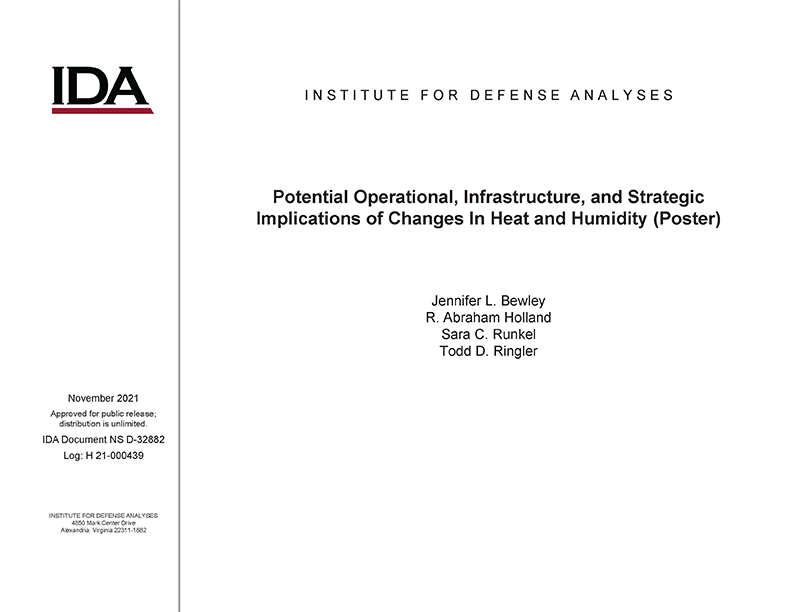Potential Operational, Infrastructure, and Strategic Implications of Changes In Heat and Humidity (Poster)
November, 2021
IDA document: D-32882
FFRDC: Systems and Analyses Center
Type: Documents,
Energy-Environment
Division: Science and Technology Division,
Science, Systems and Sustainment Division
Authors:
IDA document: D-32882
FFRDC: Systems and Analyses Center
Type: Documents
Division: Science and Technology Division
Authors:
Authors
Jennifer L. Bewley, R. Abraham Holland, Sara C. Runkel, Todd D. Ringler
See more authors

